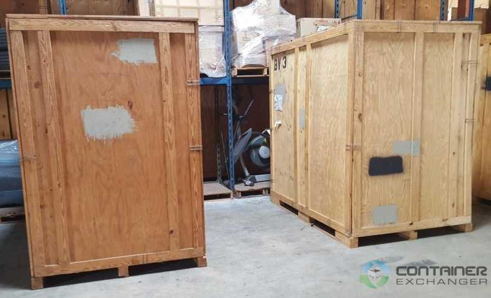
Using a shipping crate is a reliable way to transport your goods, especially across long distances like shipping overseas. They’re large and made with solid wood, so you can rest assured your goods will make it to their destination intact. However, before you pack up your shipping crate and send it off, you need to understand the dos and don’ts of shipping with wooden crates. Avoid these mistakes at all costs when transporting a shipping crate, or you could face steep fines, run into costly delays, or damage your goods in the process.
1. Not Using a Pallet
You should always use a pallet when transporting and lifting a shipping crate. In fact, you should probably use a pallet regardless of what kind of container you’re using. Pallets put some space between the crate and the ground, so you and your crew or the carriers responsible for your cargo can use a lift truck to move the crates. The arms of the lift truck will fit right into the slots of the pallet, so you can move your crates without exerting a lot of energy or putting your cargo at risk.
Wooden pallets are a great choice for wooden crates. Keep your crate centered on the pallet for easy lifting. You should use stretch wrap to keep the pallet firmly attached to the wooden crate; otherwise, your pallet could “walk away” from the crate, leaving it unsupported.
2. Not Complying with International Standards
If you’re shipping across international borders, you also need to make sure your shipping crates and wooden pallets comply with international shipping standards. All kinds of wood-borne insects and diseases can live in these wooden shipping materials, so you need to make sure that your crates and pallets have been inspected and approved by the International Plant Protection Convention (IPPC).

All your shipping materials need to have the official IPPC stamp to verify that they’ve been treated for plant pests and diseases. If you don’t have your crates and pallets stamped, they’ll get held up on the border. They may be returned to the sender or you may have to wait until the IPPC can inspect your shipping materials, which will delay your shipment. Plan ahead and make sure your crates are ready for international travel.
3. Not Packing the Crate Correctly
Wooden crates are large shipping containers that make it difficult to see what’s inside. You can store a lot of weight inside of one of these crates, but, if you don’t pack the crate correctly, you could have a messy situation on your hands. You should make sure the weight is as evenly distributed as possible before sending the crate off.
If the weight is limited to one side, the crate could tip over in one direction unexpectedly, injuring you, one of your crew members, or the carrier. If the object you need to transport is heavier on one side, you should add a warning label to the outside of the crate with a description of the contents, so everyone knows how to handle the crate properly.

4. Not Properly Cleaning the Crate
You should also keep your wooden crates clean if you plan on reusing them. All kinds of dirt and debris can collect inside a shipping crate, especially if you’re transporting loose or dirty items that create a lot of debris. Insects may be attracted to your crates if they haven’t been cleaned properly, which can cause all kinds of problems later on. You also don’t want your goods to arrive at their destination covered in dirt and debris. Wipe down the inside of the crate before you send it off to avoid these kinds of issues.
5. Not Inspecting the Crate
Over time, wood can splinter or wear down, especially if it’s been exposed to moisture. Make sure you visually inspect your crate for damage before packing and moving the crate. You don’t want to use a damaged wooden crate, or your goods won’t make it to their destination. Make sure the wood feels solid and firm, so your shipment will be secure.
Crate It Up
Use wooden shipping crates to move large, bulky items across long distances. They have what it takes to keep your goods secure overseas. Keep these mistakes in mind as you prepare your first shipment.
